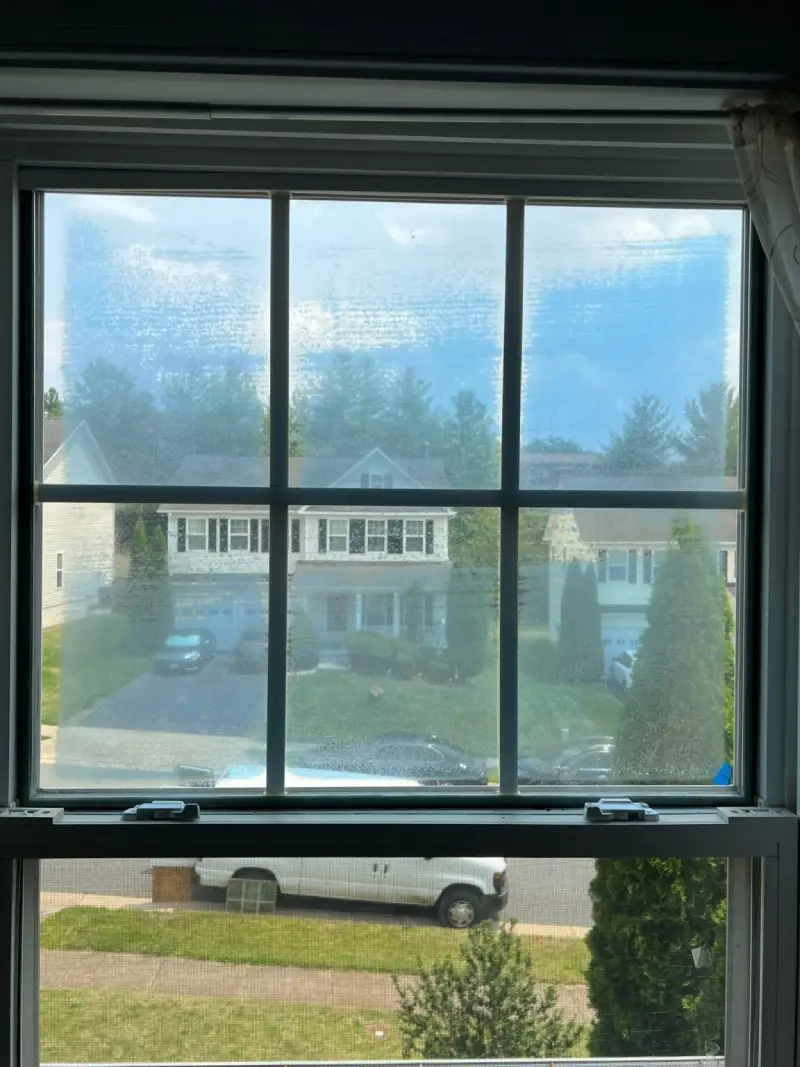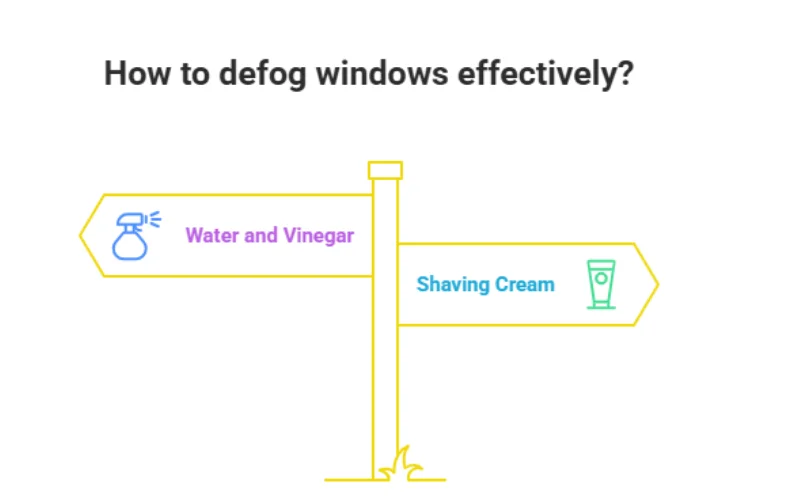Maintaining windows is crucial to household care as they are the most prominent part of your house.
Waking up to find a foggy window that obscures your view of your surroundings is irritating.
Misty windows not only ruin the curb appeal of your house but also create energy efficiency problems.
If you’re a homeowner trying to figure out what has gone wrong with your windows and a solution to the problem, you’ve landed the right blog post!
In this article, we’ll look at the possible scenarios which led to that foggy window and ways to extend the life of your windows before having to replace them.
Let’s dive in!
Should you concern yourself over a foggy window?
It depends on where on your window the moisture collects. Fogginess between window panes might be something to worry about.
Moisture can damage your frame and cause mold, mildew, rot, or deterioration. Your windows are also significantly less energy efficient.
What causes fogginess in windows?
Fogging up on the surface:
-
Temperature difference
You’re probably already aware of this.
Condensation due to a temperature difference is the most common cause of a foggy window.
The warm, moisture-laden air hits its dew point and condenses when it touches the nippy glass surface of your window or vice versa.
- Moisture build-up on the exterior surface of your window is not a cause for concern. The mist will eventually fade away on its own.
- Moisture build-up on the interior surface might be due to the high moisture content of the air due to poor ventilation inside your house.
2. Poorly insulated windows
Insufficient window insulation leads to more heat exchange between the inside and outside environment, which results in colder window surfaces.
Cool surfaces are more prone to condensation. Older or single-glazed windows are usually less insulating and more prone to condensation.
Fogging Up between window panes:
Most houses nowadays have Insulated glass units(IGUs).
These windows consist of two or more glass panes separated by a spacer and hermetically sealed at the edges to form a single unit.
Gasses like argon or krypton, which have superior insulating properties than air, fill the space between the glass panes.
Fogging up between the window panes occurs due to several reasons:
Broken or compromised seals
The seal in the IGU is damaged, worn out, or has failed due to aging. The crack allows the outside air and vapor to enter the unit.
Moisture builds up between the glass panes and results in murky windows.
Damaged frame
Damage or breakage in frames or seals surrounding the IGU can also leave a space for moisture to infiltrate the glass unit and cause fogginess.
Manufacturing flaws
IGUs usually have desiccant, a chemical substance, within the unit to absorb extra moisture and prevent fogging.
If the windows are foggy, it might be due to manufacturing flaws, such as incomplete desiccant activation.
Effective Solutions to Address Foggy Window Issues and Improve Window Performance
Preventing condensation on the surface:
To prevent condensation, try reducing the moisture content of the air in your room by the following methods:
- Install exhaust fans in high-humidity areas of your house, i.e., bathrooms and kitchen.
- Use a dehumidifier to reduce the overall humidity level inside your home.
- Apply a small quantity of water-repellent liquid to the surface of your windows.
- Improve air circulation inside your rooms by opening windows and doors when the weather is clear.
- Place a substance with moisture-absorbing properties, like silica gel packs or charcoal briquettes, near the foggy window.
Anti-fogging solutions at home
You can make a defogging solution at home with some simple ingredients. When these anti-defogging solutions are applied on the misty glass surface, they remove the fog and result in crystal-clear windows.
Do as follows:
- Mix equal parts of water and vinegar/rubbing alcohol.
- Shake properly and transfer the mixture to a spray bottle.
- Make sure the window is dry before applying the solution.
- Clean the solution with a clean cloth or paper towel in circular motions.
- You can also use shaving cream to clean foggy windows. It gives surprisingly effective results.
Use defogging products
While window defogging doesn’t fix the problem of a broken seal and reduces energy efficiency, it is cheaper than replacing the whole window.
Look for a defogging product designed especially for double-glazed windows and follow the instructions closely.
The usual procedure of window defogging is as follows:
- Drill small holes in the corners of the window and leave them for a few days to allow the moisture to escape.
- Apply an anti-fog solution to the inside of your window.
- Apply the liquid seal at the bottom of the glass.
- Add vents
Use a hairdryer
Using a hairdryer is the most cost-effective way of temporarily removing fogginess between window panes.
Here’s what you need to do:
- Use a hairdryer on low heat to blow warm air onto the foggy surface and move It back and forth the glass.
- The fogginess will eventually fade away as the moisture dries out.
- Make sure you don’t overheat the glass. Overheating would make it crack due to thermal expansion.
Replacing the IGU
Replacing IGU is more cost-effective than replacing the whole window. Plus, it solves the energy efficiency problem too.
The problem is that replacing IGU is more complex than replacing the window. Moreover, you won’t find many companies for replacing the IGU or sashes only.
FAQs
What causes foggy window glass?
Can temperature changes cause window fogging?
How do damaged seals lead to foggy windows?
Can foggy window glass be repaired?
How can I prevent window glass from fogging?
Conclusion
While all the methods above aid in solving your foggy window problem, they are temporary fixes. You’ll eventually have to replace your window with a new one.
To avoid condensation problems in the future, choose a window with higher energy efficiency, and ensure the window glass proper installation.
Meanwhile, you could use our tips and tricks to save money and keep your windows fog-free. Contact advancedwindowglassrepair to fix your foggy window glass.


















